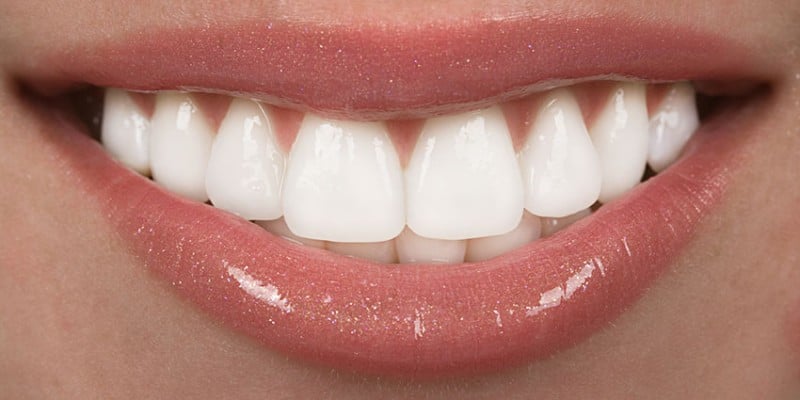How to Taste Cava Penedès Sparkling
How to Taste Cava Penedès Sparkling Cava Penedès sparkling wine is more than just a celebratory drink—it is a refined expression of Spanish terroir, tradition, and meticulous craftsmanship. Originating from the Penedès region in Catalonia, Spain, Cava is produced using the traditional method (méthode traditionnelle), the same labor-intensive process used to make Champagne. Yet, unlike its French c
How to Taste Cava Penedès Sparkling
Cava Penedès sparkling wine is more than just a celebratory drink—it is a refined expression of Spanish terroir, tradition, and meticulous craftsmanship. Originating from the Penedès region in Catalonia, Spain, Cava is produced using the traditional method (méthode traditionnelle), the same labor-intensive process used to make Champagne. Yet, unlike its French counterpart, Cava Penedès offers a distinct profile shaped by native grape varieties, Mediterranean climate, and limestone-rich soils. Tasting Cava Penedès is not merely about drinking; it is an immersive sensory experience that reveals layers of complexity, minerality, and balance. Learning how to taste Cava Penedès sparkling wine properly allows you to appreciate its nuances, distinguish quality, and make informed selections for personal enjoyment or professional evaluation. Whether you are a novice enthusiast or a seasoned sommelier, mastering the art of tasting Cava Penedès opens the door to a deeper connection with Spanish winemaking heritage.
Step-by-Step Guide
Tasting Cava Penedès sparkling wine follows a structured, multi-sensory approach designed to engage your eyes, nose, and palate fully. Each step builds upon the last, ensuring you extract maximum insight from every sip. Follow this detailed sequence to taste Cava Penedès with precision and confidence.
1. Select the Right Glass
The vessel you choose significantly impacts your tasting experience. Avoid traditional champagne flutes if you aim to fully appreciate the aromatic profile of Cava Penedès. While flutes preserve effervescence, they limit the wine’s ability to breathe. Instead, opt for a white wine glass with a slightly narrower bowl than a red wine glass but wider than a flute. This shape allows aromas to concentrate while providing enough surface area for oxygen interaction. The ideal glass should be crystal-clear, stemmed, and free of patterns or etchings that could interfere with visual assessment or bubble observation.
2. Serve at the Correct Temperature
Temperature profoundly affects how Cava Penedès expresses its flavors and aromas. Serving it too cold suppresses its aromatic complexity; serving it too warm accentuates alcohol and flattens its acidity. The optimal serving temperature for most Cava Penedès styles—Brut, Extra Brut, and even some Reserva—is between 8°C and 10°C (46°F–50°F). For older, aged Cavas such as Gran Reserva, a slightly warmer range of 10°C to 12°C (50°F–54°F) allows the evolved tertiary notes to emerge. To achieve this, chill the bottle in a refrigerator for at least four hours. If you need to cool it quickly, use an ice bucket filled with half ice and half water for 20–30 minutes. Avoid adding salt to the ice bath, as it can impart unwanted mineral notes to the bottle’s exterior.
3. Open the Bottle Correctly
Opening a bottle of Cava Penedès requires care to preserve its effervescence and avoid cork spray or excessive noise. Begin by removing the foil and the wire cage (muselet) slowly and deliberately. Keep your thumb firmly on the cork while loosening the cage. Hold the bottle at a 45-degree angle away from yourself and others. With one hand gripping the base and the other on the cork, gently twist the bottle—not the cork—while applying slight upward pressure. The cork should ease out with a soft sigh, not a pop. A loud pop can agitate the bubbles, leading to premature loss of carbonation and a less refined tasting experience.
4. Observe the Appearance
Hold the glass against a white background or natural light source. Observe the wine’s color, clarity, and effervescence. Cava Penedès typically ranges from pale straw to light gold, depending on grape composition and aging. Younger Cavas appear brighter and more crystalline, while aged versions may develop subtle amber or copper highlights. Clarity should be brilliant—any haze or particulate matter suggests filtration issues or spoilage. Now, watch the bubbles. High-quality Cava Penedès produces fine, persistent, and evenly distributed mousse. Bubbles that rise in a steady, graceful stream indicate well-managed refermentation and aging on lees. Large, erratic bubbles may signal poor production techniques or excessive pressure.
5. Swirl Gently and Assess the Aromas
Unlike still wines, Cava Penedès should be swirled minimally to avoid losing carbonation. Gently rotate the glass two to three times to release trapped aromas. Bring the glass to your nose and inhale deeply through your nose, first with your mouth closed, then with your mouth slightly open. Take three separate sniffs: the first to detect initial impressions, the second to identify underlying notes, and the third to notice evolving complexity. Primary aromas often include green apple, citrus zest, white flowers, and fresh bread. Secondary aromas—derived from yeast contact during aging—may reveal toasted almonds, brioche, dried honey, or a hint of wet stone. Aged Gran Reserva Cavas may show tertiary notes of dried fig, leather, or smoked tea. If you detect vinegar, mold, or wet cardboard, the wine may be corked or oxidized.
6. Sip and Evaluate the Palate
Take a moderate sip—enough to coat your tongue but not so much that it overwhelms. Let the wine rest on your palate for 5–10 seconds. Notice the initial attack: is it crisp and bright, or soft and rounded? Cava Penedès should have vibrant acidity, which provides structure and freshness. Next, assess the texture. Is it light and airy, or rich and creamy? The mouthfeel is influenced by lees aging; longer aging produces greater viscosity and a silky, almost oily texture. Evaluate the intensity of flavors. Do they mirror the aromas? Does the wine show depth, or is it one-dimensional? Pay attention to the balance between fruit, acidity, and residual sugar. Brut Nature (0–3 g/L sugar) will be sharply dry; Brut (0–12 g/L) offers a more approachable profile. Note the presence of minerality—a hallmark of Penedès terroir—which often manifests as flint, chalk, or sea spray.
7. Assess the Finish
The finish is where true quality reveals itself. After swallowing or spitting, observe how long the flavors linger. A short, fleeting finish suggests a young, simple Cava. A long, evolving finish—lasting 15 seconds or more—indicates complexity, extended aging, and superior craftsmanship. Note the evolution: does the finish remain fresh and citrusy, or does it transition to nutty, earthy, or smoky tones? The persistence of fine bubbles on the tongue is another indicator of quality. High-quality Cava Penedès will leave a tingling, almost electric sensation that lingers without harshness.
8. Compare and Reflect
To deepen your understanding, taste multiple Cavas side by side. Compare a young Brut with a 30-month aged Reserva and a 60-month Gran Reserva. Note how the fruit recedes and the yeast-derived characters dominate with age. Observe differences in acidity levels, bubble size, and mouthfeel. Document your impressions: what surprised you? What did you prefer? This comparative tasting trains your palate to recognize the stylistic spectrum of Cava Penedès and helps you identify your personal preferences.
Best Practices
Mastering the art of tasting Cava Penedès requires more than technique—it demands discipline, awareness, and respect for the wine’s origins. Follow these best practices to elevate your tasting experience and avoid common pitfalls.
1. Avoid Strong Odors and Flavors
Before tasting, refrain from consuming strong coffee, mint, garlic, or spicy foods. These can overwhelm your olfactory senses and mask subtle nuances in the wine. Similarly, avoid wearing perfumes or scented lotions, as their aromas can interfere with your ability to detect the wine’s bouquet.
2. Use Clean Palate Techniques
Between tastings, cleanse your palate with unsalted crackers, plain bread, or a sip of still water. Avoid sugary snacks or citrus fruits, which can alter your perception of acidity and sweetness. Some professionals use sparkling water with a hint of lemon to reset the palate without dulling the senses.
3. Taste in a Neutral Environment
Choose a quiet, well-lit room with minimal background noise and no strong ambient smells. A consistent temperature (around 20°C / 68°F) ensures your senses remain alert. Avoid tasting in kitchens or near cooking areas where food aromas may linger.
4. Record Your Tasting Notes
Keep a tasting journal. Note the producer, vintage (if applicable), grape blend, aging duration, and your sensory impressions. Use a standardized format: Appearance, Aroma, Palate, Finish, and Overall Impression. Over time, this journal becomes a personal reference guide, helping you identify patterns and preferences.
5. Taste Blind When Possible
Blind tasting removes bias and allows you to evaluate the wine purely on its sensory qualities. Cover the bottle with a cloth or use a wine bag. Guess the region, grape variety, and aging category before revealing the label. This practice sharpens your analytical skills and deepens your understanding of Cava Penedès’ stylistic range.
6. Respect the Aging Potential
Not all Cava Penedès is meant to be consumed young. While Brut and Extra Brut are excellent for immediate enjoyment, Reserva (minimum 15 months on lees) and Gran Reserva (minimum 30 months) develop greater complexity with time. Store unopened bottles upright in a cool, dark place. Once opened, reseal with a sparkling wine stopper and consume within 2–3 days for best quality.
7. Pair Thoughtfully
While Cava Penedès is often enjoyed on its own, thoughtful pairings enhance its character. Its high acidity and effervescence make it ideal with fried foods, seafood, cured meats, and aged cheeses. Try it with Iberico ham, grilled sardines, manchego cheese, or tapas with aioli. Avoid overly sweet desserts, which can clash with dry styles. For sweeter Demi-Sec Cavas, pair with fruit tarts or almond-based pastries.
8. Educate Yourself Continuously
Read about the DO Penedès regulations, grape varieties (Macabeo, Xarel·lo, Parellada, Chardonnay, Pinot Noir), and production methods. Attend virtual or in-person tastings hosted by producers. Follow Spanish wine publications and sommeliers specializing in Cava. Knowledge transforms tasting from a passive act into an intellectual journey.
Tools and Resources
While tasting Cava Penedès requires only a glass and a bottle, the right tools and resources enhance accuracy, consistency, and depth of understanding. Below is a curated list of essential equipment and authoritative references.
Essential Tools
- White Wine Glass – Recommended brands: Riedel Vinum, Zalto Denk’Art, or Spiegelau Crystal. These offer optimal shape and clarity.
- Wine Thermometer – Ensures precise serving temperature. Digital models with probe tips are ideal.
- Sparkling Wine Stopper – Preserves carbonation after opening. Look for models with airtight seals and pressure valves.
- Tasting Journal – Use a dedicated notebook or digital app like CellarTracker, Vivino, or Wine Folly’s tasting templates.
- Decanter (Optional) – For older Gran Reserva Cavas, a brief 10-minute decant can open up complex aromas without damaging bubbles.
Recommended Resources
Books:
- The Wines of Spain by Peter Sisseck and Andrew Jefford – Comprehensive guide to Spanish wine regions, including Penedès.
- Cava: Spain’s Sparkling Wine by Jancis Robinson – A definitive resource on Cava’s history, production, and key producers.
- Wine Folly: The Essential Guide to Wine by Madeline Puckette and Justin Hammack – Excellent for beginners learning sensory evaluation.
Online Platforms:
- Wine Searcher – Compare prices and find specific Cava Penedès bottles near you.
- DO Penedès Official Website – Provides detailed information on appellation rules, permitted grapes, and certified producers.
- Master of Wine Tasting Videos – YouTube channels like Jancis Robinson and Jamie Goode offer expert-led tastings of Cava.
Producers to Explore:
- Freixenet – The world’s largest Cava producer; known for consistent quality across styles.
- Gramona – A pioneer in organic and biodynamic Cava; renowned for its Ilicità and Celler Batlle lines.
- Recaredo – Produces some of Spain’s most age-worthy, terroir-driven Cavas, often aged 60+ months.
- Segura Viudas – Offers excellent value and a wide range of styles, including rosé and single-vineyard expressions.
- Agustí Torelló Mata – Focuses on traditional method and low-intervention winemaking.
Mobile Apps
- Vivino – Scan labels to read community ratings and tasting notes.
- Wine-Searcher – Locate bottles, compare prices, and find expert reviews.
- CellarTracker – Track your personal collection and log tasting notes over time.
Real Examples
Understanding theory is valuable, but real-world examples bring the tasting process to life. Below are three distinct Cava Penedès wines, each representing a different category, with detailed tasting profiles based on professional evaluations.
Example 1: Freixenet Cordon Negro Brut (Entry-Level)
Producer: Freixenet
Style: Brut (12 g/L residual sugar)
Ageing: 9–12 months on lees
Blend: Macabeo, Xarel·lo, Parellada
Appearance: Pale straw with a steady stream of fine, persistent bubbles.
Aroma: Dominated by green apple, lemon peel, and a touch of white blossom. Subtle notes of fresh bread and wet stone emerge after a moment.
Palate: Crisp and lively, with zesty acidity. Light-bodied with minimal texture. Flavors mirror the nose: citrus and green pear dominate, with a clean, dry finish.
Finish: Short to medium (8–10 seconds), with a refreshing, slightly saline aftertaste.
Verdict: A reliable, approachable Cava ideal for casual gatherings. Excellent value. Not complex, but well-made and consistent. Best consumed within 1–2 years of bottling.
Example 2: Gramona III Lustros Reserva (Mid-Tier)
Producer: Gramona
Style: Brut Nature (0 g/L residual sugar)
Ageing: 48 months on lees
Blend: 50% Xarel·lo, 30% Macabeo, 20% Parellada
Appearance: Light gold with a luminous sheen. Bubbles are extremely fine and slow-rising, indicating extended lees contact.
Aroma: Complex and layered: toasted almonds, dried apricot, beeswax, and a distinct mineral note reminiscent of crushed limestone. Hints of chamomile and sea salt emerge with air.
Palate: Medium-bodied with a creamy, almost velvety texture. Acidity is vibrant but integrated, balancing the richness. Flavors of baked pear, hazelnut, and a touch of smoke unfold slowly. No sweetness detected—pure dryness.
Finish: Long and evolving (20+ seconds). The minerality lingers, followed by a subtle bitterness reminiscent of almond skin, adding depth.
Verdict: A benchmark for modern, terroir-focused Cava. This wine demonstrates how extended aging transforms simple grapes into something profound. Perfect with grilled octopus or aged manchego.
Example 3: Recaredo Turó d’en Mota Gran Reserva (Premium)
Producer: Recaredo
Style: Brut Nature (0 g/L)
Ageing: 72+ months on lees
Blend: 70% Xarel·lo, 30% Macabeo (single-vineyard, organic)
Appearance: Deep gold with a faint copper rim. Bubbles are microscopic and rise like mist, indicating exceptional pressure management.
Aroma: Intense and evolving: dried fig, caramelized orange peel, wet wool, truffle, and a whisper of smoked tea. Underlying notes of beeswax and wet granite persist.
Palate: Full-bodied and structured, with a silky, almost oily texture. Acidity is present but deeply woven into the fabric of the wine. Flavors of quince paste, toasted hazelnut, and salted butter dominate, with a savory umami undertone. No hint of oxidation—pure vitality.
Finish: Exceptionally long (30+ seconds). The wine evolves on the palate, shifting from fruit to earth to spice. Leaves a haunting echo of dried herbs and flint.
Verdict: One of Spain’s greatest sparkling wines. This is not just Cava—it’s a vinous experience. Best enjoyed with foie gras, roasted duck, or aged cheeses. Can age for another 10–15 years in ideal conditions.
FAQs
Is Cava Penedès the same as Champagne?
No. While both use the traditional method, Cava Penedès is produced in Spain using native Spanish grape varieties like Macabeo, Xarel·lo, and Parellada, whereas Champagne uses Chardonnay, Pinot Noir, and Pinot Meunier. Cava is typically more affordable and often lighter in body, with brighter acidity and more citrus-driven profiles.
How long does Cava Penedès last after opening?
When properly sealed with a sparkling wine stopper and refrigerated, Cava Penedès retains its effervescence and flavor for 2–3 days. Beyond that, the bubbles dissipate, and the wine loses its vibrancy.
Can I age Cava Penedès?
Yes—especially Reserva and Gran Reserva styles. These are designed for aging and develop greater complexity, nuttiness, and depth over time. Most Brut and Extra Brut are best enjoyed young, within 2–3 years of bottling.
What’s the difference between Brut Nature and Brut Cava?
Brut Nature has zero or up to 3 grams per liter of residual sugar and is the driest style. Brut contains up to 12 grams per liter and may have a touch of sweetness to balance acidity. Brut Nature offers a more austere, mineral-driven profile, while Brut is more approachable and fruit-forward.
Why does Cava Penedès have smaller bubbles than Prosecco?
Cava Penedès is made using the traditional method, where secondary fermentation occurs in the bottle, producing fine, tightly integrated bubbles. Prosecco uses the Charmat method, where fermentation happens in large tanks, resulting in larger, more aggressive bubbles that dissipate faster.
Is organic Cava Penedès better?
Organic certification ensures grapes are grown without synthetic pesticides or fertilizers. While not inherently “better,” organic and biodynamic practices often lead to more expressive, terroir-driven wines. Producers like Gramona and Recaredo have gained acclaim for their organic approaches.
How do I know if my Cava is corked?
A corked Cava will smell musty, like wet cardboard or damp basement. This is caused by TCA (2,4,6-trichloroanisole), a chemical contaminant. If you detect this odor, the wine is flawed and should not be consumed.
Can I use Cava Penedès in cocktails?
Absolutely. Its crisp acidity and fine bubbles make it ideal for sparkling cocktails. Try it in a Spanish Mimosa (with blood orange juice) or a Cava Spritz with elderflower liqueur and soda. Avoid using expensive Gran Reserva Cavas in cocktails—save them for sipping.
Conclusion
Tasting Cava Penedès sparkling wine is an art that marries technical precision with sensory sensitivity. From selecting the right glass to interpreting the evolution of flavors on the palate, each step deepens your appreciation for this remarkable Spanish treasure. Unlike mass-produced sparkling wines, Cava Penedès carries the soul of its terroir—the sun-drenched hills of Catalonia, the ancient limestone soils, and generations of winemakers who have refined the traditional method to perfection. Whether you’re savoring a youthful Brut at a summer picnic or contemplating a 72-month Gran Reserva by a winter fire, the experience is one of discovery. By following the steps outlined in this guide, adopting best practices, and exploring real examples, you transform tasting from a routine act into a meaningful ritual. Let each sip be a journey—not just through flavor, but through history, culture, and craftsmanship. The next time you open a bottle of Cava Penedès, remember: you’re not just drinking sparkling wine. You’re tasting the essence of Spain.





































